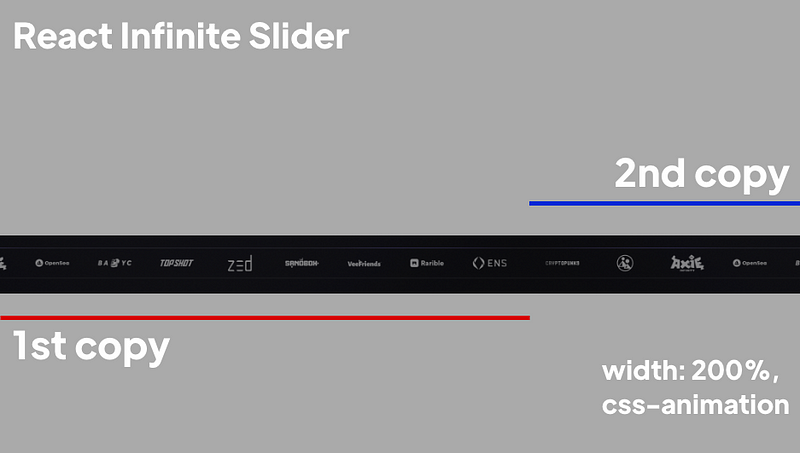Mastering Infinite Sliders in React Without Dependencies
Written on
Understanding Infinite Sliders
Have you ever needed to create an infinite slider for displaying various partner logos or similar content? Personally, my go-to method in such situations was to search for a suitable library online and simply integrate it. However, this method comes with its own set of challenges:
- Third-Party Dependencies: Relying on external libraries can introduce bugs down the line if they become unsupported.
- Increased Project Size: Using pre-built components can bloat your project size, especially if you depend on multiple libraries.
- Unnecessary Complexity: Ironically, third-party libraries often bring more complexity than the simple functionality we require, making modifications more difficult.
Today, we'll explore how infinite sliders function and how you can build one from scratch.
How Infinite Sliders Operate
Before diving into the coding aspect, it's crucial to grasp the mechanics of an infinite slider. A picture can often convey more than words, so let's visualize it:

To create a smooth sliding effect, we need to consider the following:
- Duplicate the Slider: To achieve continuous movement, we must create two copies of the slider.
- Set Width to 200%: The total width should be double what you initially desire. This allows the slider to reset when it reaches half of the designated width. You might wonder if it can be this straightforward, but it truly is.
- Enable Infinite Animation: The animation should loop seamlessly.
Coding the Infinite Slider
Now, let's get into the coding, which is the fun part! I'll provide the complete code and explain each section.
I’m utilizing Tailwind CSS, but don't fret if you're unfamiliar; it's quite intuitive.
Part 1 — Container
<div className="w-[200%] h-20 border-t border-b border-gray-600 overflow-hidden relative">
Begin by constructing a static container that holds the slider. You can apply styling, like a border, as shown. This div will serve as the outer shell.
Part 2 — Inner Container
<div className="w-[200%] flex items-center h-20 justify-around absolute left-0 animate gap-20 animate">
The inner container is similar to the outer one but will be animated. The animation is straightforward.
It's essential to note that the left percentage (in this case, -100%) should be half the width of the outer container (200%). This setup allows the slider to transition to -100% and then restart smoothly.
Part 3 — Content
In this section, we iterate through an array to display images. Remember, you need two identical lists for the slider to function correctly.
Part 4 — Final Results

The code culminates in a slider, which I believe is quite impressive!
Conclusion
In this guide, you’ve learned how to build an infinite slider using just 50 lines of code. To summarize, you'll create a static container to hold your content, an animated inner container, and two lists of the items you wish to showcase. That's all there is to it!
The first video covers creating a responsive autoplay slider using React and Tailwind CSS, providing a comprehensive tutorial.
The second video demonstrates building a responsive carousel with an infinite loop, perfect for enhancing your React projects.